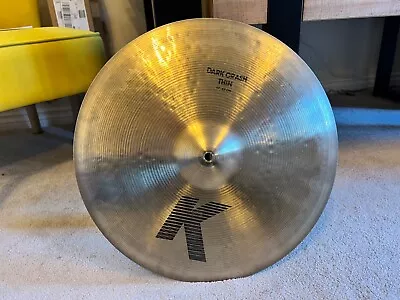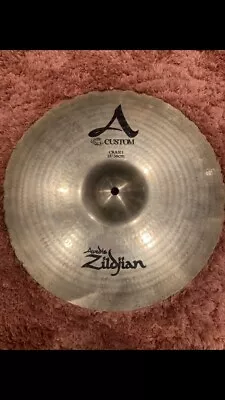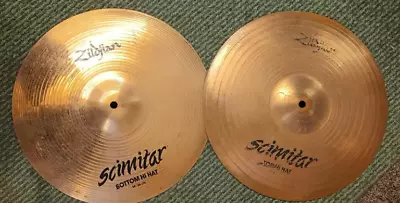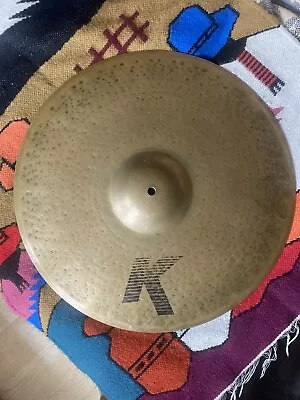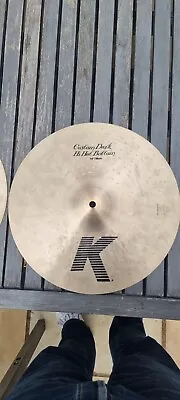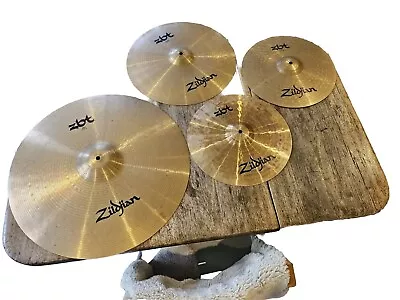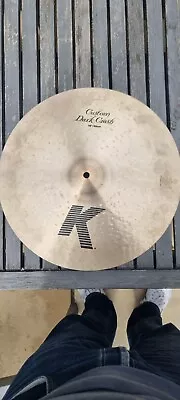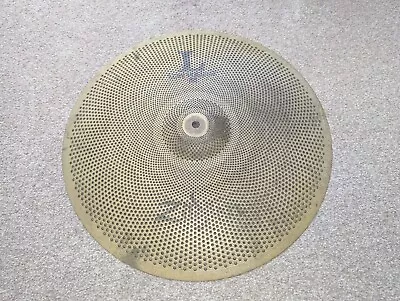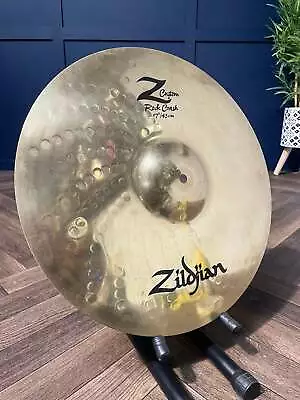This site may earn a commission as part of the eBay Partner Network and Amazon Associates Program if you make a purchase through our links.
Zildjian Cymbals Buying Guide
Cymbals are a crucial aspect of modern music, used to keep rhythm and provide texture and dynamic in all kinds of musical genres and for an uncountable number of different purposes. They have served their many purposes since antiquity, but over the most recent centuries, the first name and the last word in cymbals has been Zildjian.
Cymbals may appear like simple instruments, but they are actually very complex, and unlike other instruments, it can be difficult to understand the differences between different cymbals and, thereby, make the right purchase. It requires a little education to make the right cymbal purchases so that the correct sound is achieved and to ensure that the sound compliments contemporaneous sections of music.
A Beginner’s Look at Zildjian Cymbals
To underpin buying decisions, it is useful to understand some of the background of cymbals and Zildjian.
History of Cymbals
Cymbals were the first idiophones (an instrument which exploits vibration) ever created, and are known to have been first created during in the Bronze Age Mesopotamian era. The usefulness of bronze was realised for tools, weapons and crude instruments for thousands of years, and by the time of the Ottoman Empire, the Turks were already highly sophisticated cymbal makers, and cymbals were ubiquitous in their music.
History of Zildjian
By the Enlightenment, the Turks were firmly seated as the best cymbal manufacturers, with advanced bronze formulation and production methods refined steadily from one generation of cymbal-maker to the next.
The Zildjian Company began with the alchemist Avedis Zildjian almost 400 years ago in 1618. His initial aim was to create gold by combining the base metals copper, tin and small amounts of silver; he failed at creating gold, but his unique mixture (a secret to this day) made for cymbals with brilliant sound qualities. They were so good that the Sultan employed him to make cymbals at Topkapi Palace.
Thirteen generations later, Zildjian expanded to Massachusetts in 1929. The company exploded in popularity alongside the rise of modern music thanks to artist relations, and now in the 21st century, the eighteenth generation (Debbie and Craigie Zildjian) still own and operate the business.
Cymbal Manufacture
Cast cymbal manufacturing begins with the melting down of tin, copper and silver to form casts. All modern cymbals are made from bronze with traces of silver; as Avedis first understood, no other alloy delivers such a good quality of sound. With repeated heating and cooling, the casts are compressed and shaped to increase flexibility and musicality. Sheet cymbal manufacturing begins with a ‘ready-made’ disk of metal.
The metal is then cut to the desired size and hammered, either by hand or machine, into the desired shape. Hand lathing is then performed to decrease the thickness and create the cymbal ridges. Cutting, polishing and ‘maturing’ are the final steps. Each cymbal produced will have its own unique musical character.
Getting to know Cymbals
The cymbal is much more than a disc to be struck to produce sound.
Parts of the Cymbal
The surface of the average cymbal includes a number of important features. These are the bell, taper, bow, and edge. Bells affect the sound of the entire cymbal and provide their own unique qualities when isolated in play. The taper is the radial decrease in thickness of the cymbal, and the bow is the radial curvature. The edge of the cymbal is very delicate, and when a cymbal is hit at the very edge, the cymbal provides its entire colour.
Cymbal Sound Characteristics
Cymbals offer an unlimited amount of musical diversity, and there are many different things which have an impact on a cymbal’s overall sonic characteristics, including the brand of cymbal, whether it is made from cast or sheet, and the size, weight, thickness, and shape.
When a cymbal is played, there is not only a fundamental tone, but a mixture of overtones and undertones sounding at different frequencies and amplitudes, the combination of which is always highly dependent on how hard the cymbal is hit. This combination is collectively known as the colour of the cymbal. ‘Dark’ cymbals have strong low frequencies, while ‘bright’ cymbals have strong high frequencies. Low frequencies provide richness and character, while the hissing high frequencies provide ‘cut’ and can be clearly heard above other instruments.
Heavier cymbals are louder and have higher pitch and longer lag and sustain, while lighter cymbals react very quickly (attack), have lower pitch, and short sustain. Thinner cymbals vibrate at lower frequencies, while thicker cymbals vibrate at higher frequencies, and as a general rule, the larger the cymbal the lower the pitch.
The central bell and the tapering of the cymbal also have a significant effect on the tone – high curvature results in a higher pitch, larger bells provide clear tone, liveliness and cut, and smaller bells provide a dryer sound and a less clear tone. In truth, there are so many ways to describe the sound of a cymbal, but the most significant aspects are the response, sustain, and colour.
Types of Cymbal
The cymbal staples of any modern drum kit include the hi-hat, ride, crash, crash ride, and china cymbal. There are also orchestral clash cymbals which are used in pairs.
|
Hi-Hat |
Small, paired cymbals. Foot pedal provides lots of options |
Rhythm |
|---|---|---|
|
Ride |
Large bell. Very good colour |
Rhythm |
|
Crash |
Very responsive |
Accents / musical shifts |
|
Crash Ride |
Small and thin. Offers richness and liveliness |
Dynamic |
|
China |
Curved upwards. Complex colour |
Distinctive Accent |
Zildjian Drumset Cymbals
Below is a list of cymbals produced by Zildjian. They offer cast bronze options, which are more expensive, and cheaper sheet bronze options. Cast bronze cymbals are characterised by distinctive circular ridges.
|
Cast Bronze |
|
|---|---|
|
A-Series |
A loud and dynamic range of cymbals that are highly sensitive to individual play style. These are the Zildjian standard used for generations. Also available in a range of custom options. |
|
K-Series |
These cymbals are deep, mellow and dry, with a range of high and low frequencies that are good for subtle and artistic play. Also available in a range of custom options. |
|
Z3 Series |
Large, flexible, very loud and powerful, complete with a large bell. |
|
FX Series |
These are modern cymbals designed by leading percussionists and drummers which provide character and exotic colours. |
|
Sheet Bronze |
|
|
ZHT Series |
With a high tin content and large amounts of hammering this series offers better tonality than previously available with sheet bronze. |
|
ZXT Series |
These cymbals provide plenty of power, brightness and cut with special hammered patterns and lines. |
|
ZBT Series |
This performance series of sheet cymbals are bright and provide quick response. |
|
Zildjian Band & Orchestral Cymbals |
|
|
A Orchestral |
An ideal choice for both professionals and learners, these offer an organic, bright sound with lots of cut. |
|
A Concert Stage |
These cymbals are designed for students, and their dynamic colour means that they never sound out of place. |
|
A Stadium |
Smooth, bright and warm, these shimmering cymbals have a wide tonal spectrum. Created for drum corps, they fill the largest of indoor spaces and project very well outdoors. |
|
A Symphonic Tone |
The symphonic version of the classic A Zildjian. A bright and natural sound. |
|
A Z-MAC |
Designed for jazz, concert and marching bands, these cymbals are suitable for all ensembles. |
|
K Constantinople |
The unique name of this cymbal reflects its unique expression and blend, and it is effective at enhancing professional ensembles. A rich and dark sound. |
|
K Symphonic |
This is a light-weight, well-balanced cymbal with consistent colour no matter how it is played. There is high cut, medium response and medium sustain. |
Conclusion
Zildjian cymbals offer exceptional quality and superior colour and tonality. They are trusted by drummers and percussionists in a wide range of music genres and professionals and work equally well for novice drummers buying their first drum kit as well as for seasoned orchestral professionals. Buying Zildjian-brand cymbals on eBay can make the process of finding the perfect cymbal for an individual musician a snap.
